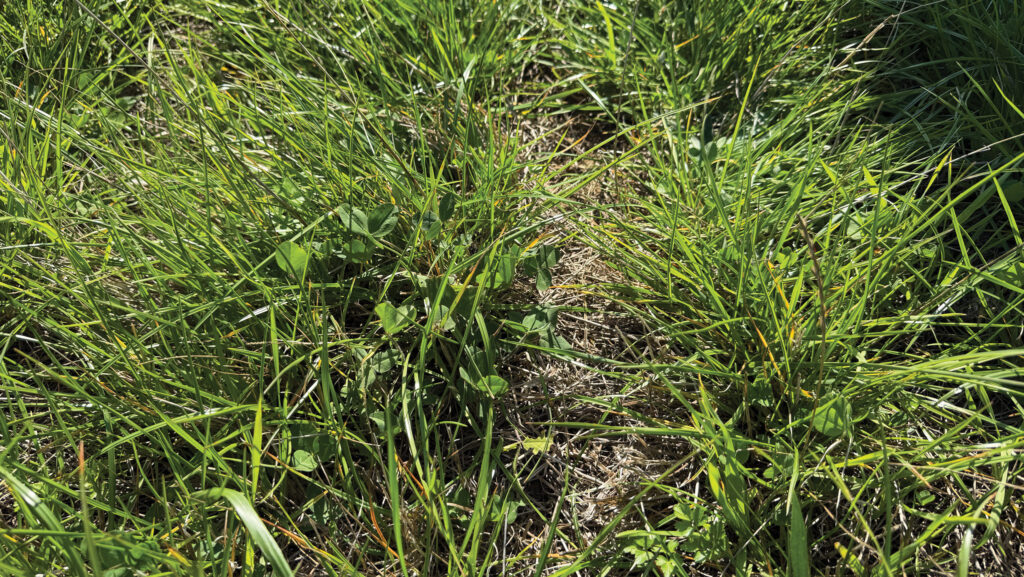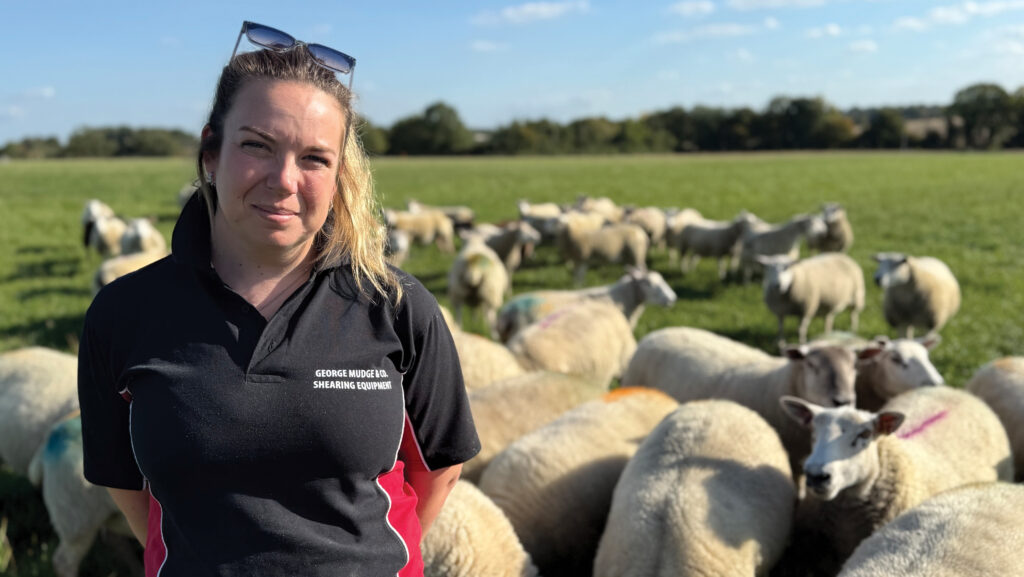Top tips on establishing tricky herbal leys
 Herbal leys © Hayley Chapman
Herbal leys © Hayley Chapman While herbal leys are a lifesaver in drought, rocket fuel for finishing stock, and a good earner on a land management scheme, they are not without their challenges.
They can be tricky to establish, as well as manage – and costly to reseed if maintenance does not go to plan.
At a recent AHDB event in Essex, beef and sheep consultant Dr Liz Genever, and Ben Rodgers, farm adviser for Catchment Sensitive Farming, shared some of their top tips with farmers looking to incorporate herbal leys into grassland and arable farms.
See also: 8 expert tips for efficiently grazing herbal leys
“Research shows lambs on herbal leys finished 51 days sooner than lambs on permanent pasture, and were more consistent [in quality],” said Liz.
“You want herbal leys to achieve all the benefits – saving money on nitrogen, improving stock health and soil condition, drought resilience and good-quality forage – but to do that, they need to be established well,” said Ben.
Plan the location
Check where you are allowed to plant herbal leys and whether ground is suitable.
- Be aware of environmental regulations that may restrict where you can plant, such as land with a designated status (for example, species-rich grassland or with archaeological features); as well as land that has not been cultivated, fertilised or sprayed in the past 15 years. It is worth researching “Environmental Impact Assessment regulations” to check for potential breaches.
- Understand your soil fertility and structure. Assess pH, phosphate (P) and potassium (K). Target pH 6-7 and P index of 2 and K index 2-.
- Think about the weed burden because control options are limited for multispecies leys.
- Lots of weeds, such as ragwort and thistles, would suggest a soil high in bacteria, often driven by cultivation, spraying and fertilising. A total and available nutrients soil test will show if there is an obvious imbalance, which can be addressed before planting.
Pick the species
When you are allowed to plant and have chosen suitable fields, species selection must be right.
“We’re trying to select plants that have different rooting structures, so that they can change the soil.
“That isn’t just about compaction, it is about putting roots and carbon in different parts of the soil.
“The counter to that is that herbal leys aren’t going to magically solve a soil problem,” said Liz.
- Think about whether individual species will suit farm circumstances, rather than sowing species for the sake of it.
- Look at the seed rate of the different species in a pre-prepared mix. Some mixes are 60-70% grasses, so there will be a domination effect.
- Consider the intended use: grazing, ensiling or both. Some species, such as chicory, would often be omitted from silage mixes because it gets stalky when too mature.
- Schemes have their own restrictions surrounding numbers of species that must be included; this needs to be complied with if planting is part of an agreement for a land management scheme.
- Species with different rooting structures can reach, and bring up, different minerals, with benefits for animal health.
Plant seeds
Crop establishment can be tricky.
- Soil needs to be warm (more than 8C) for legumes in particular to get going; ideal timing can vary geographically.
- Moisture is key, so plant with rain forecast, but also roll immediately after planting to maximise seed-soil contact.
- Sowing depth (broadcast or drilling) must be shallow – 5-10mm is the guide. Operator consistency is key here – make sure contractors are on board.
- Cross-drilling is an effective way to reduce competition from other species if the herbs/legumes are less densely planted – drilling 50% of the seed in one direction and the rest of the seed during a second pass at a 45deg angle.
- Broad-leaf perennial weeds, such as docks, cannot be controlled without also killing off herbs. Weed control options typically include blanket spraying before planting, spot spraying, direct drilling or using a min-till approach to avoid disturbing weed seeds.
- Soil structure needs to be suitable for direct drilling. Surface compaction can reduce efficacy; in such cases, removing previous crop residue, and min-tilling the ground down to 10cm before rolling, works well before broadcasting.
- Direct drilling seems to be more effective in younger swards, which are more open at the base. Where there is a thatch on top and root mass underneath, it is less effective.
- The big challenge with overseeding is competition – compared with a full reseed, establishment is reduced by about 60-70%.
Protect sward diversity
Herbal leys require different management to grass.
“We can generate a grass-dominant sward in a year if we manage it like a grass.
“Herbal leys don’t cope well with being eaten and trodden on repeatedly. They need rest and recovery,” said Liz.
Management must be responsive to crop and weather conditions.
- Stock can selectively graze different herbs and legumes, which allows the grass to take over.
- Some herbs need four to six weeks of post-grazing recovery. Factor rest periods into the rotation plan to maintain different species.
- Herbal leys are slower to get growing in the spring, which affects turnout. Winter closing plans need to consider spring grazing requirements.
- Crown damage of some herbs and legumes can reduce persistency and leave bare patches – this is particularly relevant when grazing in winter and wet periods.
Prepare well for cutting and silaging
Cutting and silaging herbal leys can be used as part of the grazing rotation to control rapid growth of some species.
It can also produce high-protein, high-mineral silage with a similar metabolisable energy to ryegrass silage.
- Do not mow leys too short – leave a stubble of about 8cm.
- Wilt for 24-48 hours and rake gently.
- Do not overhandle anything with a high proportion of clover and legumes – it can rapidly become very dry and breakable. Disconnecting, or down-gearing, the conditioner on the mower can help.
- Mow nice and wide – this might avoid the need to ted – or ted the swath straight after mowing, or when there is a dew on it.
- Be aware that when some species get too mature (especially chicory and some legumes), they lose palatability and can become stalky and difficult to wrap.
- Consider a homofermentative inoculant.
Case study: Hoys Farm Produce, Essex
Multispecies leys drilled under the Sustainable Farming Incentive have provided good grazing for finishing lambs and tupping – and handled the drought – for Emily and Ben Wells’ 106-ewe flock.

Emily Wells © Hayley Chapman
Hoys Farm, predominantly arable, introduced a commercial sheep enterprise in 2021.
The ewes, lambing in February, are mainly Texel and North Country Mules, put to continental tups, and 40% of lambs are sold direct to consumers.
In October 2024, Emily and Ben drilled 8ha (20 acres) of herbal leys to provide grazing alongside the farm’s 12ha of permanent pasture.
The ground was mole ploughed, cultivated with tines and planted with a tine seed drill in row. It was rolled and slug pelleted after drilling.
The mix contains two ryegrasses, timothy, tall fescue, meadow fescue, cocksfoot, alsike clover, burnet, chicory, plantain, yarrow, sheeps parsley, and red and white clovers.
All were selected to suit scheme requirements and the farm.
Nitrogen inputs were 25kg/ha, whereas the grassland had 80kg/ha (it was coming out of a low input scheme).
The leys were then topped before being grazed.
The leys were split into 2ha paddocks and used for lambs at weaning, grazing for four days and moving on.
After a dry summer, with some rain, the leys have continued to grow well into autumn, so have provided good grazing for the tupping period.
“We’re currently grazing for seven days, then moving.
“We sent our first lambs off at 14 weeks: their growth rates were really good. We would use herbal leys again,” said Emily.
